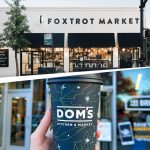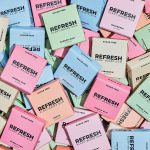The Rise of the Multicultural Consumer
Multicultural consumers currently account for more than 38 percent of the total U.S. population and by 2044, the U.S. Census predicts they will become the numeric majority.
For entrepreneurs, the shift represents a major opportunity to innovate and attract a rapidly growing consumer set that’s already altering the food and beverage landscape.
According to a recent report titled The Multicultural Edge: Rising Super Consumers published by consumer insights firm Nielsen, growth of the multicultural consumer’s buying power is more than double that of the total U.S at $3.4 trillion in 2014.
Even more noteworthy is that those same multicultural consumers are becoming “Super Consumers” — that holy grail for CPG companies in which the top 10 percent of a category’s household consumers drive a significant percentage of sales (akin to the 80/20 rule). These Super Consumers can drive, at the very least, 30 percent of sales, 40 percent of growth and 50 percent of profits. Multicultural consumers currently make up Super Consumers in 15 major buying categories, according to Nielsen.
Nielsen points out that brands (and entrepreneurs), who understand what drives multicultural consumer behaviors today will not only gain valuable insight into future market trends, but will also form long-term relationships with a shopper base that will have dominant buying power for years to come.
Furthermore, according to Nielsen’s chief content officer, Saul Rosenberg, and senior vice president of multicultural growth and strategy, Monica Gil, multicultural shoppers have increasing influence over the attitudes and consumption habits of non-multicultural consumers, further magnifying the multicultural market opportunity.
A walk through the Nielsen report reveals that in examining the multicultural shopper’s influence, Nielsen looked at: 1) the growth in population and buying power of the varying groups; 2) the prevalence of diversity by generational group; 3) the multicultural shoppers’ presence in major metropolitan areas; 4) the mindset of multicultural consumer groups when shopping; and 5) the top buying categories for each multicultural group.
Check out the report for more detail on each section, but here are some key facts and statistics for entrepreneurs looking to understand this growing consumer group.
Ninety-two percent of total growth in U.S. population from 2000 -2014 came from multicultural consumers.
Hispanics will experience the most growth among the multicultural consumer groups, accounting for over 50 percent of the country’s total population growth by 2020, while Asian-Americans will account for 15 percent and African-Americans will account for 18 percent.
Multicultural groups represent over 50 percent of the population under the age of nine compared to 35 percent for the age range of 45 to 50 and 17 percent for ages 80 and over.
In terms of effective years of buying power over non-multicultural consumers, Hispanics average 19.8 years more, Asian-Americans average 15.6 years more, and African-Americans average 5.6 years more.
In major metropolitan areas, 21 of the top 25 most populated counties in the United States are already more than 50 percent multicultural. Cities include New York, Washington, DC, Houston, Los Angeles and San Francisco.
Multicultural populations are also sprouting into much less populated areas where employment opportunity can be strong to attract young job seekers.
Twenty-nine percent of Asian-Americans surveyed say they buy organic, versus 18 percent in Hispanics and 14 percent in African-Americans.
Seventy-eight percent of African Americans answered their cultural heritage is an important part of their identity, versus 71 percent in Hispanics and 61 percent in Asian Americans.
Of 126 grocery store categories reviewed, 45 categories (36 percent) over-indexed in total rate of spending for all multicultural consumers versus non-multicultural.
For entrepreneurs looking to find out exactly what categories multicultural consumers are currently buying, below are two charts from the Nielsen report showing the top 20 categories dominated by the various multicultural groups along with the categories where these groups are Super Consumers. Dried vegetables and grains seemed prevalent across all groups. Refrigerated juices were notable as well, with the report citing large families and a preference for fruit products from one’s own country of ancestry as reasons.













